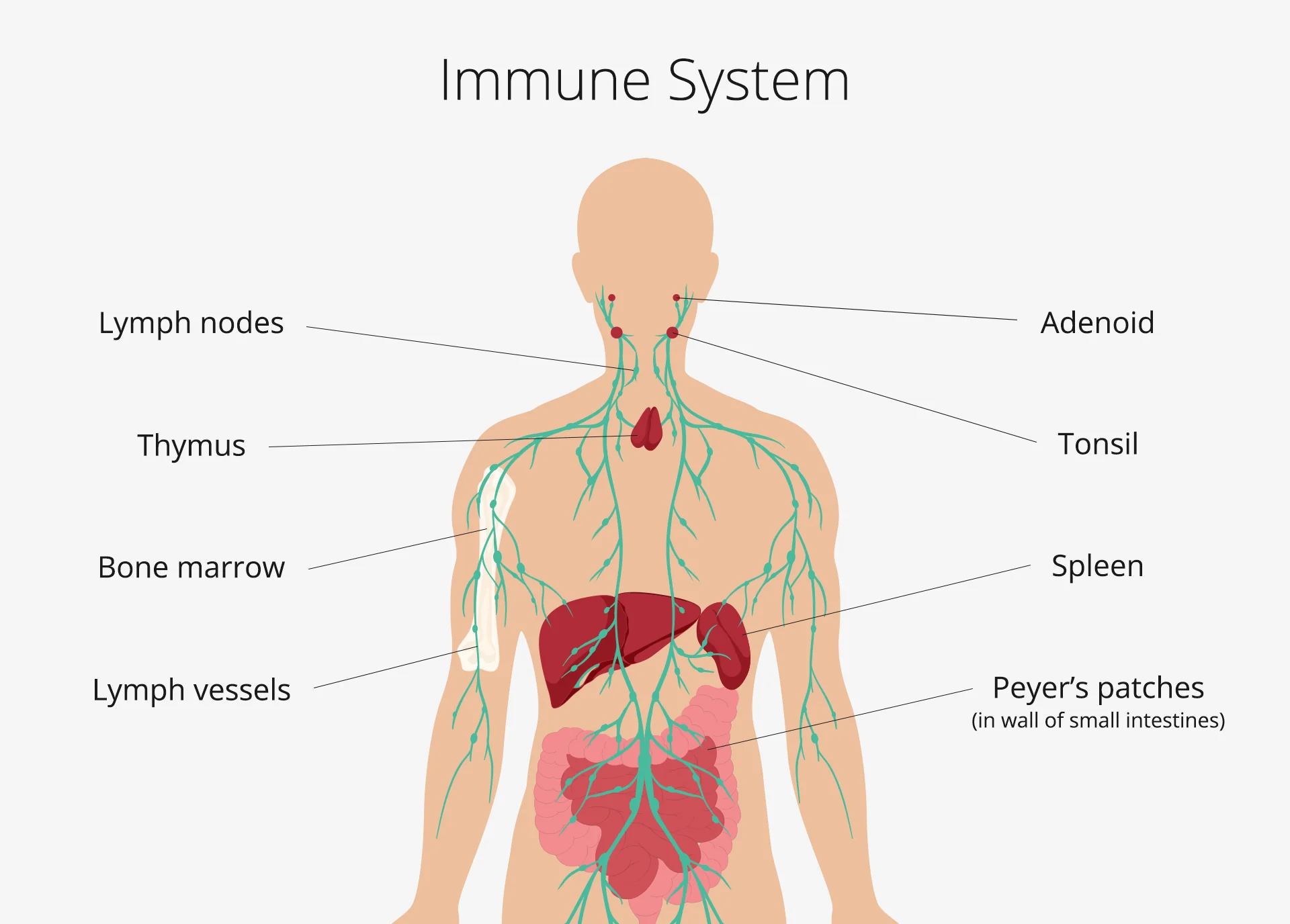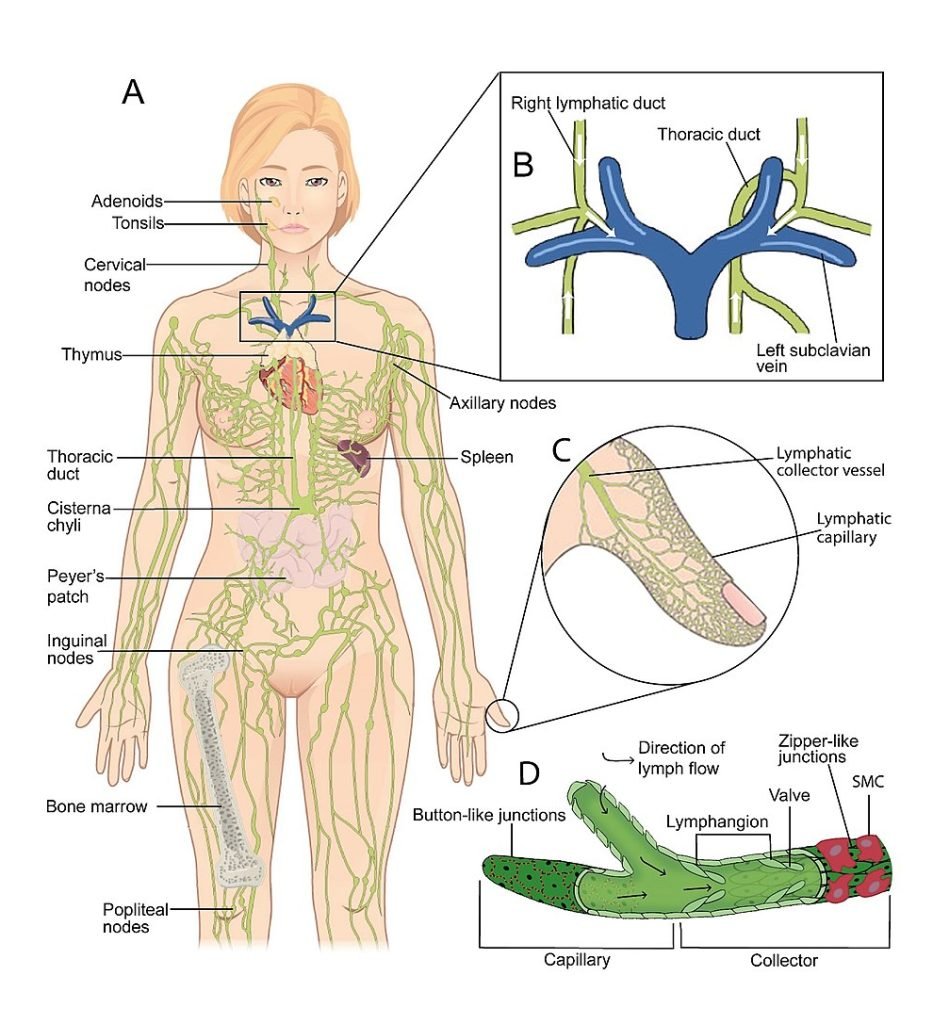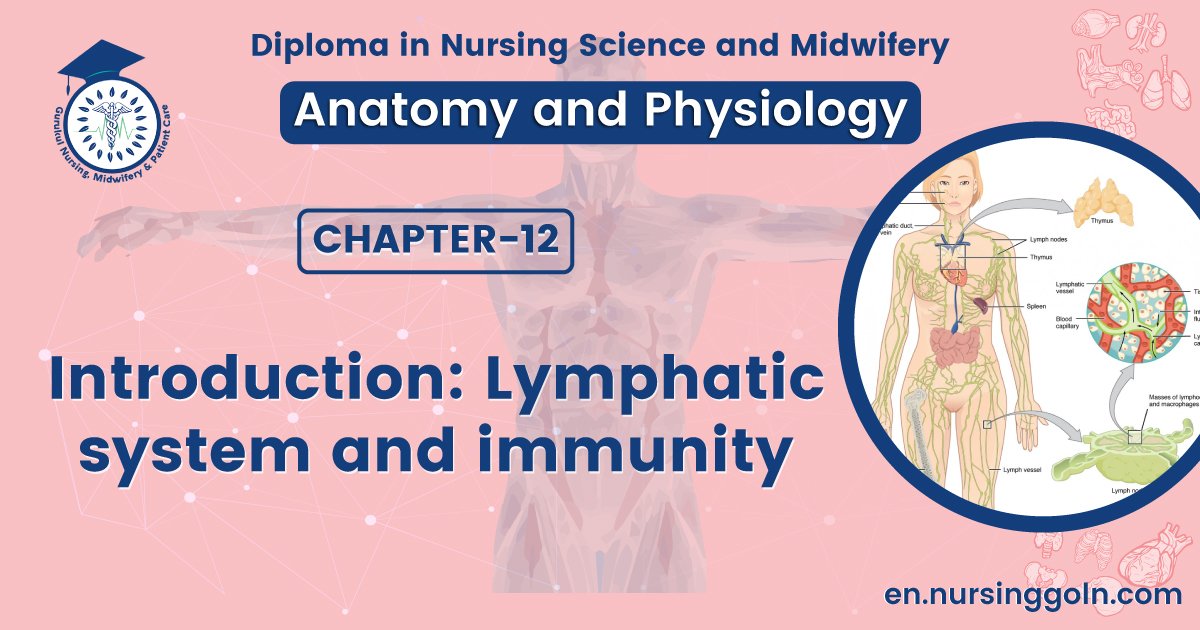Introduction: Lymphatic system and immunity-The course is designed for the basic understanding of anatomical structures and physiological functions of human body, musculoskeletal system, digestive system, respiratory system; cardiovascular system; urinary system, endocrine system, reproductive system, nervous system, hematologic system, sensory organs, integumentary system, and immune system.The aim of the course is to acquire knowledge and skills regarding anatomy and physiology.

Introduction: Lymphatic system and immunity
The body system responsible for adaptive immunity (and some aspects of innate immunity) is the lymphatic system, which consists of lymph, lymphatic vessels, a number of structures and organs containing lymphatic tissue, and red bone marrow. Lymphatic tissue is a specialized form of reticular connective tissue that contains large numbers of lymphocytes.
Most components of blood plasma filter out of blood capillary walls to form interstitial fluid, the fluid that surrounds the cells of body tissues. After interstitial fluid passes into lymphatic vessels, it is called lymph. Both fluids are chemically similar to blood plasma.
The main difference is that interstitial fluid and lymph contain less protein than blood plasma because most plasma protein molecules are too large to filter through the capillary wall. Each day, about 20 liters of fluid filter from blood into tissue spaces.

Functions of Lymphatic system
The lymphatic system has three primary functions:
- Drains excess interstitial fluid.
Lymphatic vessels drain excess interstitial fluid and leaked proteins from tissue spaces and return them to the blood. This activity helps maintain fluid balance in the body and prevents depletion of vital plasma proteins.
- Transports dietary lipids.
Lymphatic vessels transport the lipids and lipid-soluble vitamins (A, D, E, and K) absorbed by the gastrointestinal tract into the blood.
- Carries out immune responses.
Lymphatic tissue initiates highly specific responses directed against particular microbes or abnormal cells.

(Ref:- J. Tortora, 8h edition, P-433)
Read more:
